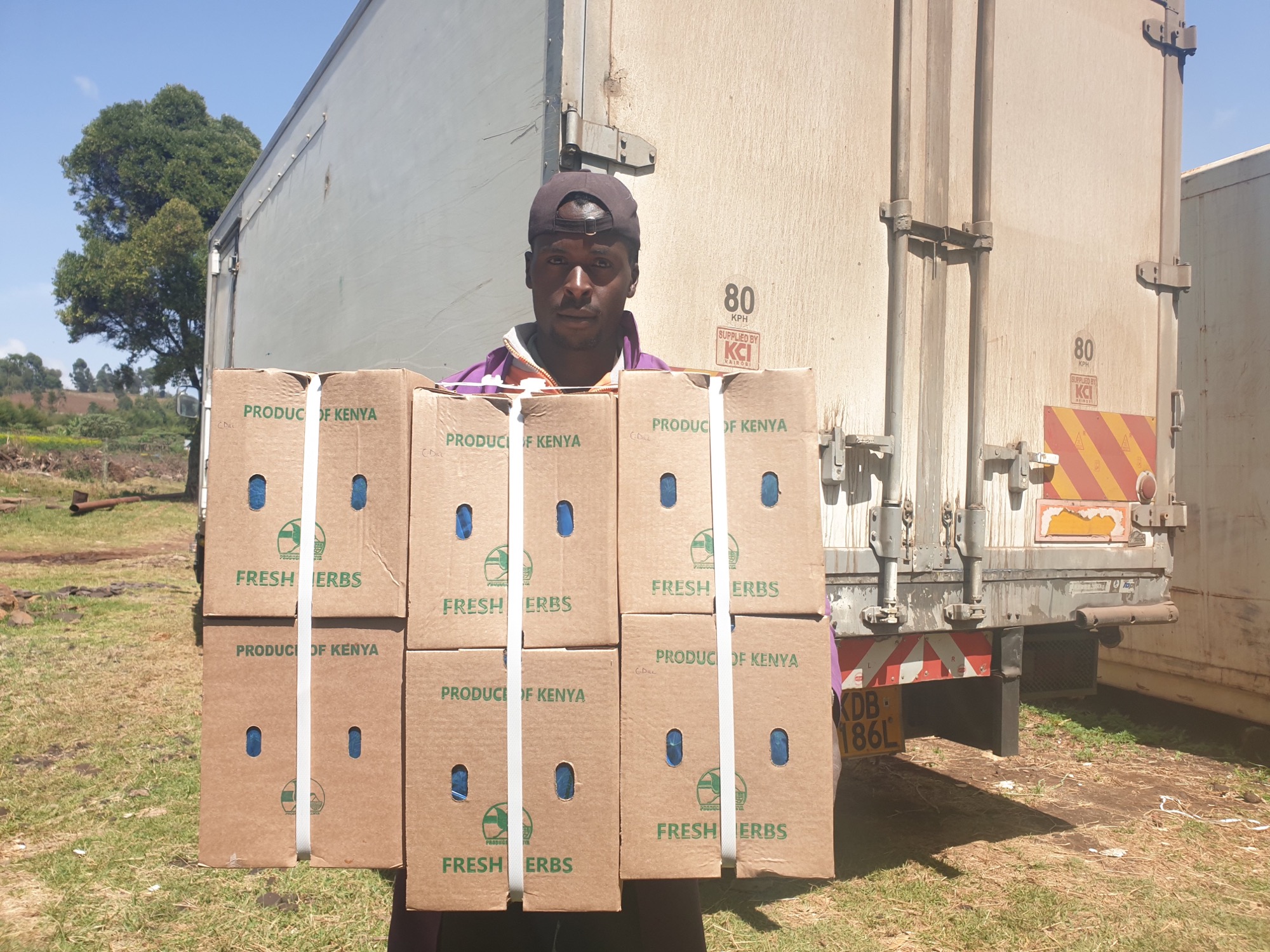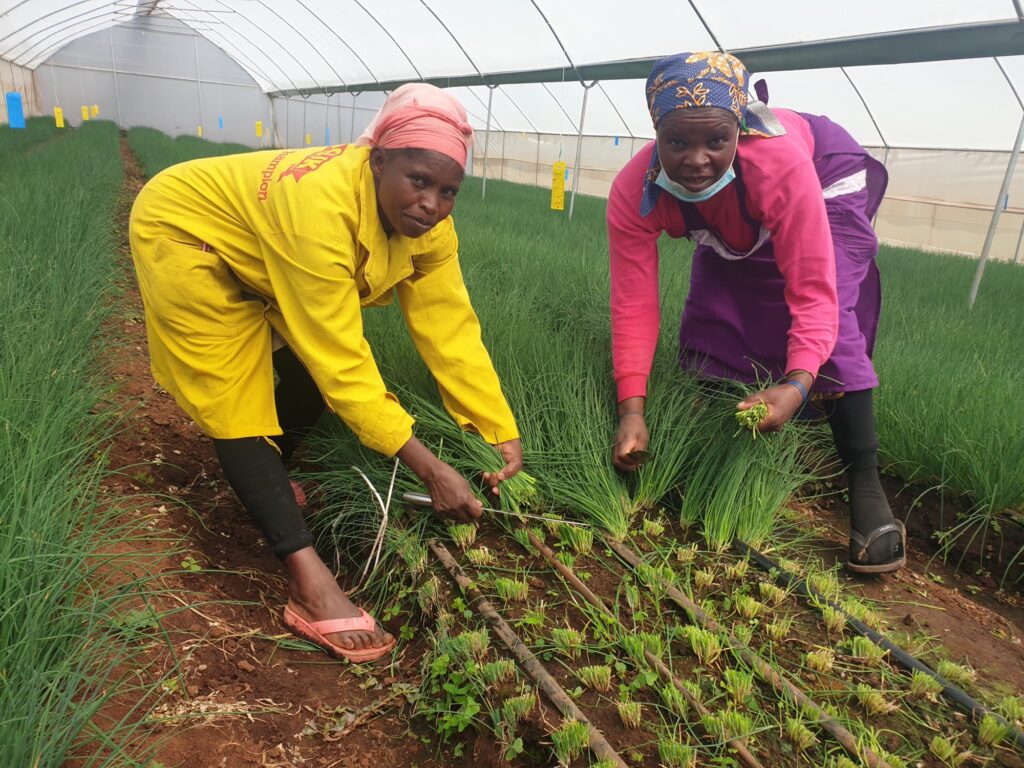Small Holder Farmers Aggregate Produce, Access Market

Farms in Matuiku village in Nakuru’s Salgaa area are characterized by well dug fields with maize stalks from the older crop spread all over.
Some farmers are busy preparing their farms as the planting season is fast approaching while others are already planting. Seemingly most farmers here grow maize, beans and potatoes.
Taking a left turn on a road which connects Matuiku to Salgaa to get to a farm whose activities are totally different from the others.
A refrigerated lorry is packed here, near a cold room. It is time to collect produce aggregated from small holder farmers from the area, who have beaten odds to venture into herbs and spices farming.
Ruth Munyoro, an exporter, works with 16 different farmers who grow assorted varieties of herbs and spices in their small portions and have joined hands in accessing export market.
“Farmers are spread over different areas including Subukia, Ngorika among other areas,” says Ruth, adding, “Alone each farmer may not be able to export unlike those with large farms, but jointly, they can,”
A professional agronomist, Ruth spends her days in farms either inspecting crops or harvesting. She has a team of workers with whom she works across all farms in a bid to ensure that quality and standards are well maintained as per the particular demands by the clients.

Exporters act as Mediators
Many small holder farmers do not have facilities such as pack houses and coolers which are essential in horticulture sector. While some small holder farmers are discouraged by lack of such facilities, there are those who are determined to beat all odds and utilize their small spaces to earn income.
“I had always wanted to be a herbs and spices farmer although I did not know where to start, until another farmer introduced me to it,” says Collins Langat, a farmer who specializes in rosemary and dill farming in Elburgon.
By being in a group which aggregates produce, Langat says he is able to easily access agronomists’ services and is never worried about market.
His key duty is to ensure that his produce meets market demand and ensure that he takes care of the crop as instructed by the agronomist.
“Exporters act as mediators between producers and the export market saving farmers from the hustles and bustles that come in sourcing for and satisfying different markets,” says Ruth, adding that she exports about two tonnes of fresh produce weekly with European Union (EU) being her main market.
MARKUP Kenya Trains Farmers
Her sentiments come at a time that the EU-supported Market Access Upgrade Program (MARKUP) Kenya is training farmers from different counties on group dynamics and good governance. Already, these trainings have been implemented in various counties including Siaya, Homabay, Makueni, Embu among others.
“We hope to train 1,500 farmers within the 12 counties in which MARKUP Kenya is implemented,” says Maina Karuiru, the program’s National Coordinator, adding “Through these trainings, farmers are informed on how they can work jointly in groups and reap the benefits of economies of scale,”
Additionally, farmers will also be trained on Global Good Agricultural Practices (GAP) in a bid to enlighten them on its importance especially in accessing export market.
Implemented by the United Nations Industrial Development Organisation (UNIDO) in partnership with the government and private sector, MARKUP Kenya aims at enhancing food safety and market access for Kenya produce locally, regionally and internationally.
While producers are doing as much to ensure they meet the required standards, access to markets is gradually becoming a challenge as cost of transport and packaging has been escalating at an alarming rate.
“In two weeks tome, the cost of fuel to Nairobi has increased from Sh16,000 to Sh24,000 yet sometime the commodity is not even available as the country has been experiencing acute shortage,” observes Ruth
As at November last year, the cost of packaging cartons which she uses was Sh37 against current Sh47.
This, she observes causes low income among farmers who have to bear the burden of high cost of transportation and packaging.
She urges the government to come up with ways of ensuring minimal cost of production and transport so that fresh produce farmers can realize more profits.
